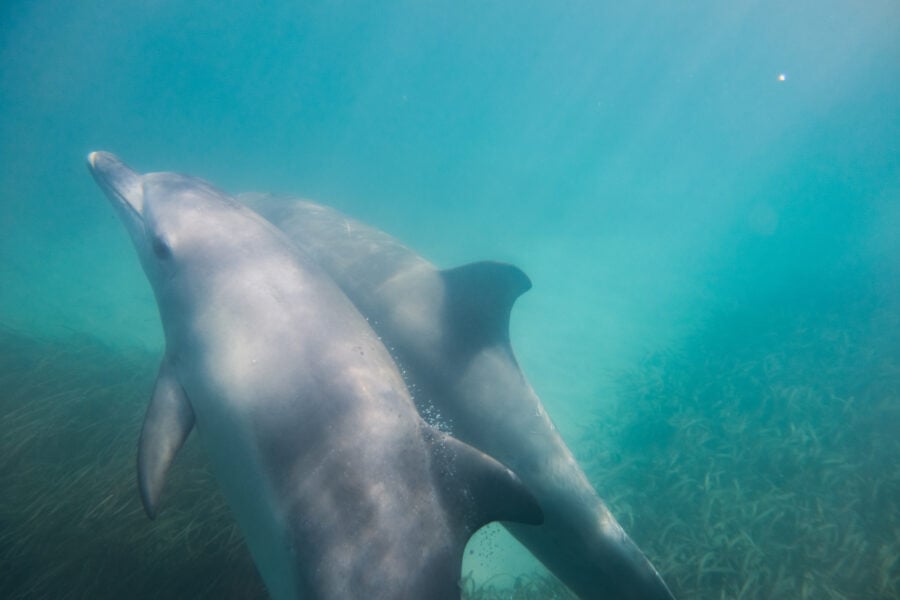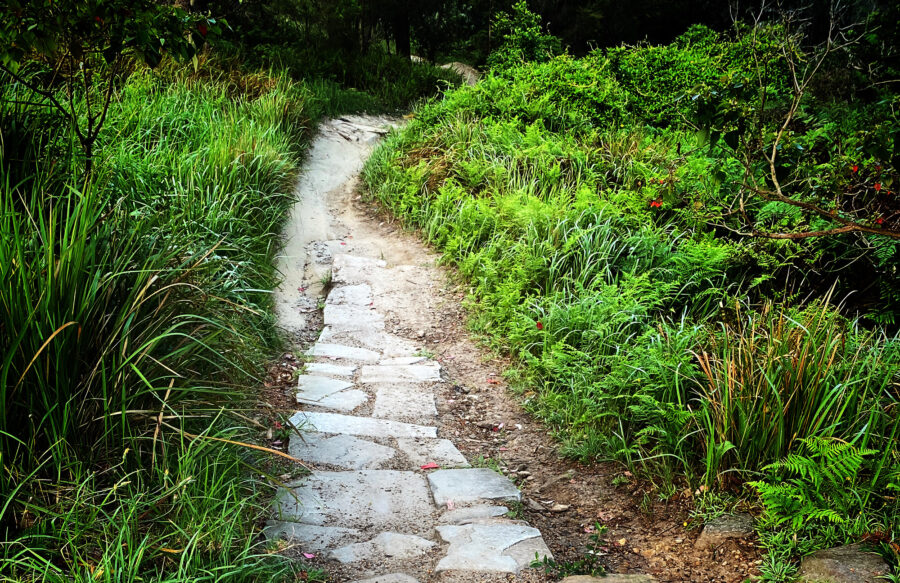Top 10 whale-watching spots in Australia
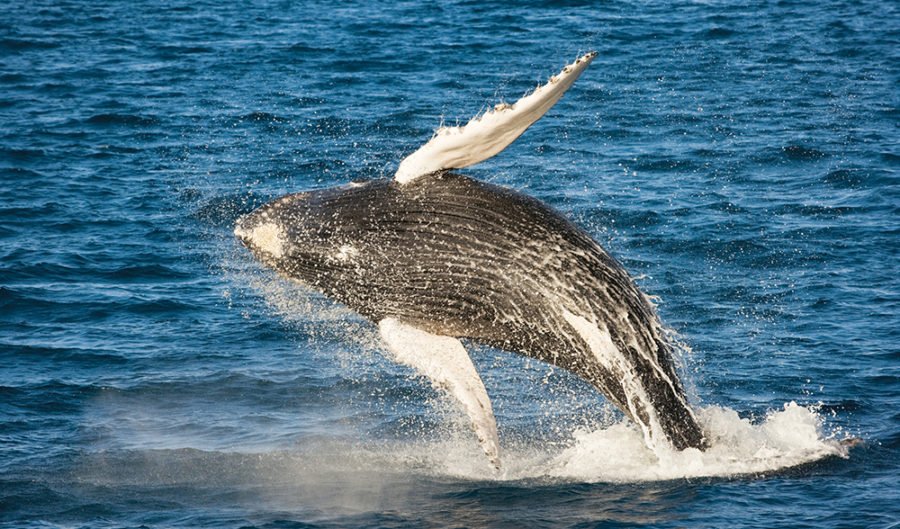
From tail throws, spyhops and chin slaps, to blows and leaps above the surface while breaching, some whales can put on a spectacular display. And it’s a show at which many Australians have a front-row seat, with nearly 60 per cent of the world’s cetaceans (whales, dolphins and porpoises) found in our waters.
Humpback and southern right whales are the most commonly sighted. During annual migrations, some species can be seen at many locations, from the warm waters of tropical Queensland to the cooler southern coast of Western Australia. And with their immense size and the tendency of some to travel and calve in inshore waters, they are often easily observed from the beach or land-based lookouts.
1. Great Barrier Reef, QLD
The best time of year to spot dwarf minke whales on the reef is June–July, when pods of the curious animals gather here for a few weeks. Little is known about the migration pattern and life cycle of this subspecies of the common minke whale, but they are easily distinguished by their small size and mottled grey, black and white colouration.
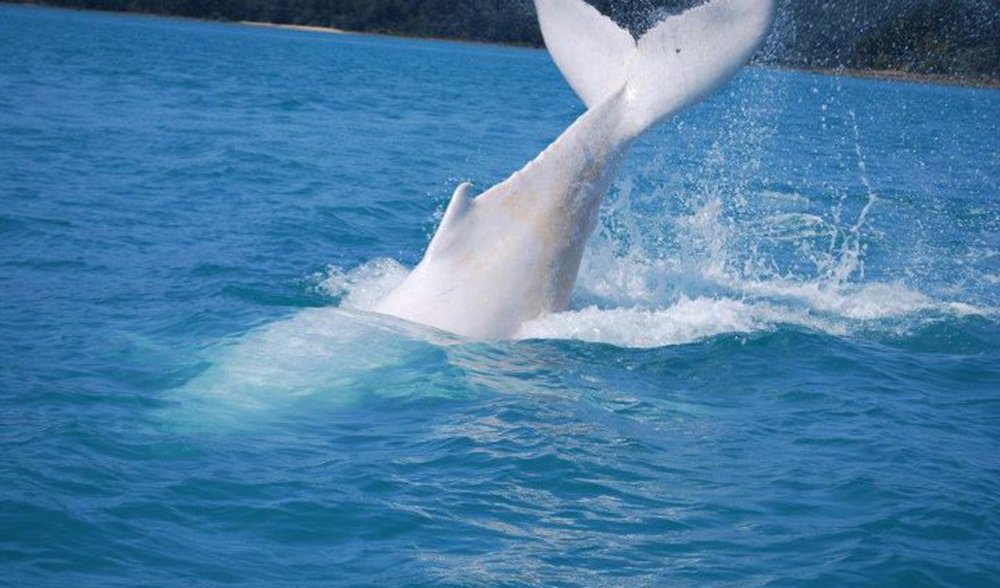
Migaloo the albino humpback is occasionally spotted in tropical north Queensland. (Image: Wayne Fewings/ Tourism QLD)
2. Whitsundays, QLD
During May–September, short-finned pilot whales frolic in the warm waters of the Whitsunday Islands. Highly social, they are often seen in pods of 15–50. They share this region with humpbacks, which arrive here to calve in the nursery grounds of these shallow, protected waters. ‘Migaloo’, an albino humpback, has been seen on occasion in the waters of tropical north Queensland.
3. Eden, NSW
Large pods of humpbacks can be seen off Eden’s coast during September–November, on their southward migration from tropical breeding grounds. Staying close to shore with their calves, they can be seen from a number of land-based vantage points. Killer whales and sperm whales can also be seen further off the coast. The town’s annual whale festival takes place at the end of October, and the killer whale museum provides
insight into the areas’ whaling history.
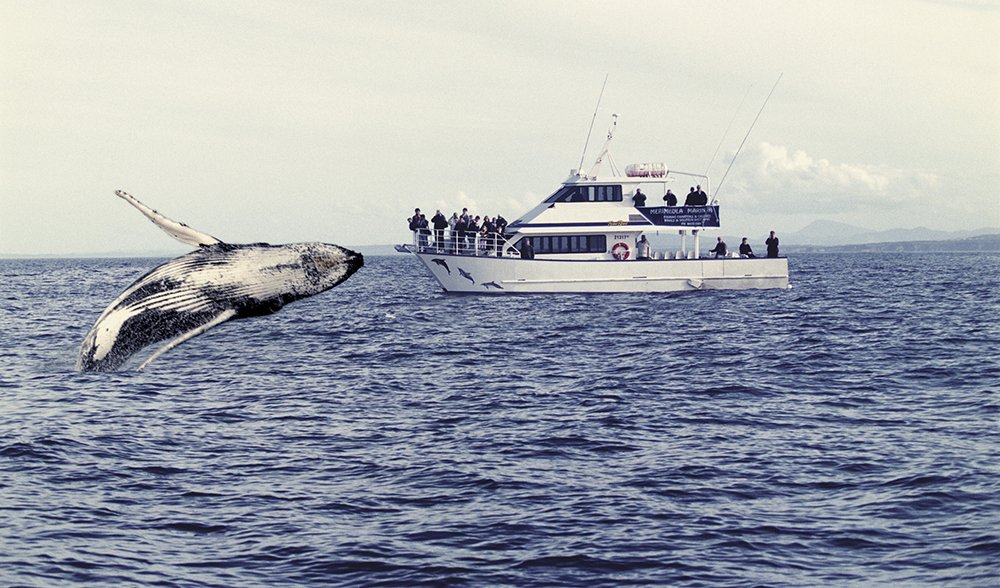
Whale watching in Merimbula, near Eden, on the far south coast of NSW. (Image: Destination NSW)
4. Bruny Island, TAS
Each year during May–July and September–December, humpback and southern right whales pass through Bruny’s waters. Sightings are most common in Adventure Bay on South Bruny, where some whales take shelter for up to five weeks. Several other whale species visit the region on occasion, including killer whales, pygmy right whales and minke whales.
5. Warrnambool, VIC
During June–September, southern right whales arrive in Warrnambool to give birth in sheltered bays. Their slow pace makes them ideal for whale watching and, sadly, also a target of whalers in the 19th century. Watch mothers and calves frolic off Logans Beach from the viewing platform. Blue whales have also been sighted further offshore in May.
6. Victor Harbor, SA
During June–October, southern right whales arrive in the warm waters of SA to mate and calve. Swimming close to shore and rarely faster than 10km/h, they can often be watched for extended periods. Humpbacks, sperm whales, orcas and blue whales are also known to visit the region. Between whale-watching forays, stop in at the South Australian Whale Centre to learn about the history of whaling and take part in interactive exhibits.
7. Great Australian Bight Marine Park, SA
The tail-lobbing, flipper-slapping and head-standing of southern right whales makes for impressive viewing. They can be seen and heard from cliff tops in the Head of Bight region during May–October, while they mate, calve and nurse their young. Extensive coastal whaling for oil and baleen during the 19th century caused the population to crash, but it is now recovering at about 7 per cent per year. The region is also home to a number of other whale species, dolphins, great white sharks and Australian sea lions.
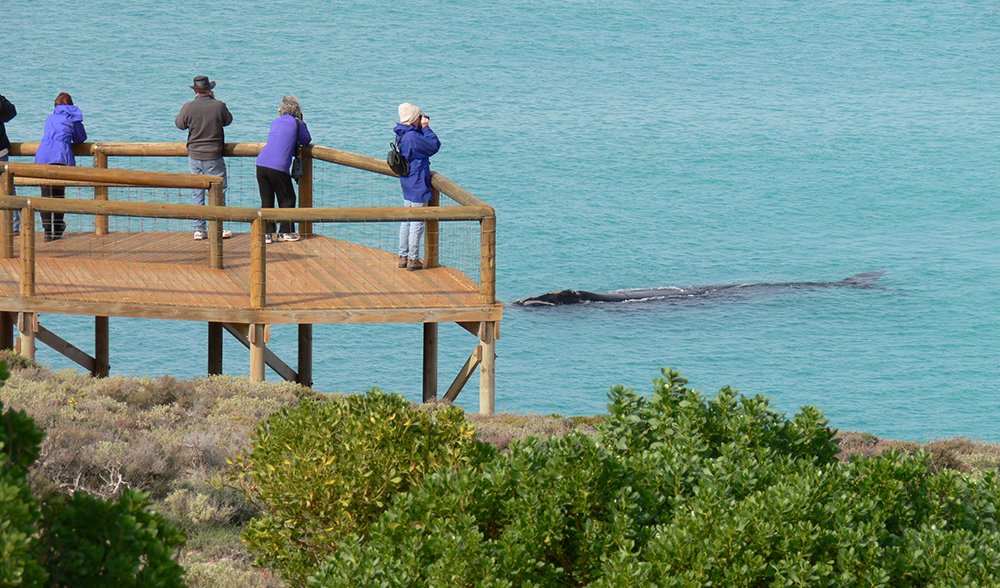
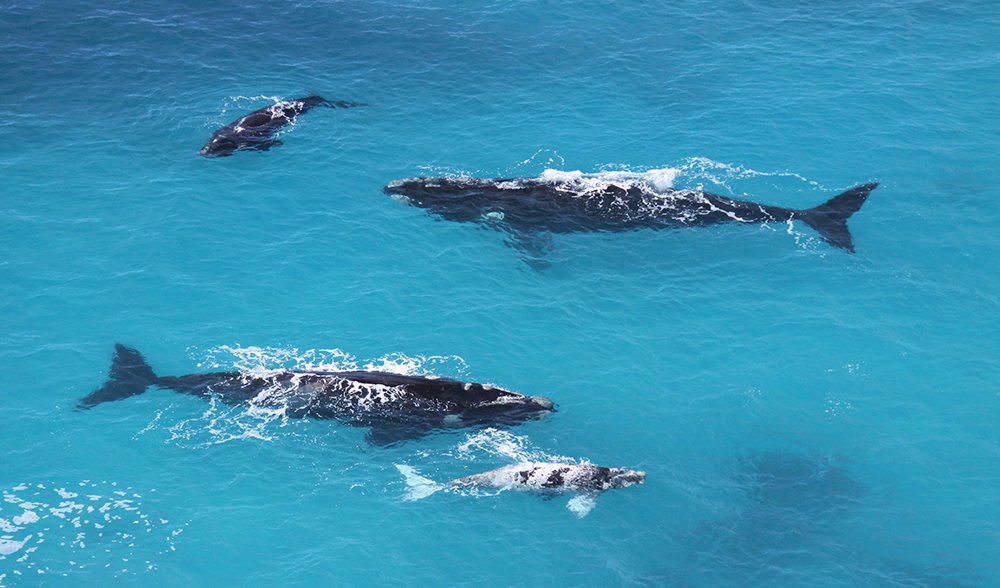
The viewing platform at the Head of Bight (top) offers a bird’s-eye view of the southern right whales that take up residence here between June and October, each year (bottom). The Head of Bight Tourist Centre is built on Yalata land, which is held in trust by the Aboriginal Lands Trust, which focuses on economic and employment opportunities for local Aboriginal people through the tourism potential offered by the Head of Bight. (Image: Aboriginal Lands Trust)
8. Bremer Canyon, WA
From Bremer Bay, about 180km east of Albany, tour boats travel 70km offshore to Bremer Canyon, a marine hotspot teeming with life in January–April. Pods of killer whales regularly congregate here along with giant squid, sperm whales, beaked whales, dolphins, blue sharks and masses of seabirds to take advantage of increased productivity, linked to hydrothermal vents on the sea floor.
9. Albany, WA
Both humpback and southern right whales are regular visitors during June–November
as they make their migrations to and from Antarctica. While the humpbacks continue north to Broome, the southern right whales take shelter in Albany’s southern bays to
mate and calve, where they can be seen from look-outs along the coastline. In May–June, blue whales are also occasionally sighted. Visitors can learn about the magnificent mammals at Whale World, a museum that was once a whaling station.
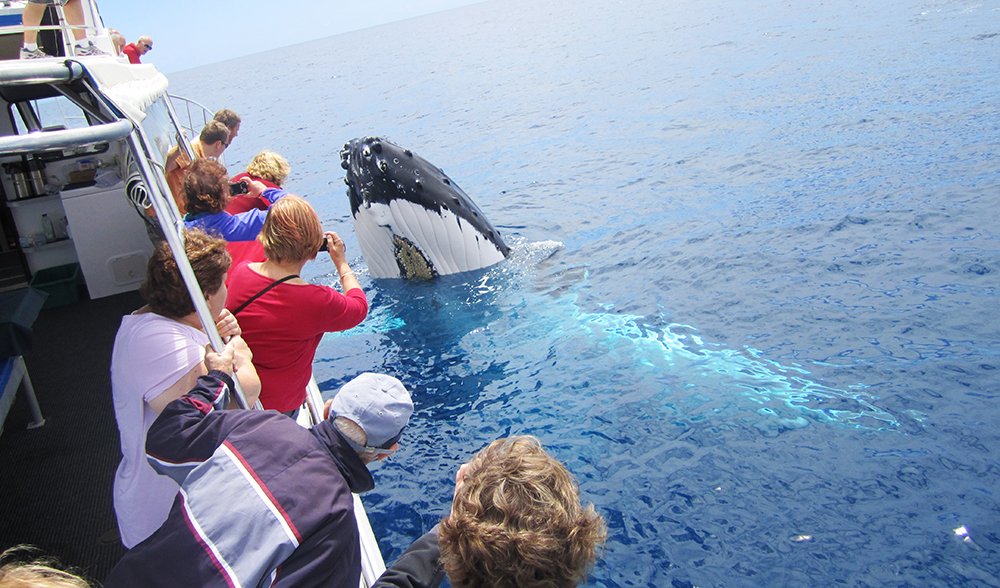
Humpback whale (Megaptera novangliae) in Geographe Bay. (Image: Legend Charters)
10. Geographe Bay, WA
The south-west of Western Australia is a well-known biodiversity hotspot, and its waters do not disappoint. During October–November, pygmy blue whales and their calves can be sighted on their southward migration, alongside bottlenose dolphins from the coast of Geographe Bay. Southern right whales, humpbacks and minke whales can also be sighted here.
READ MORE:
